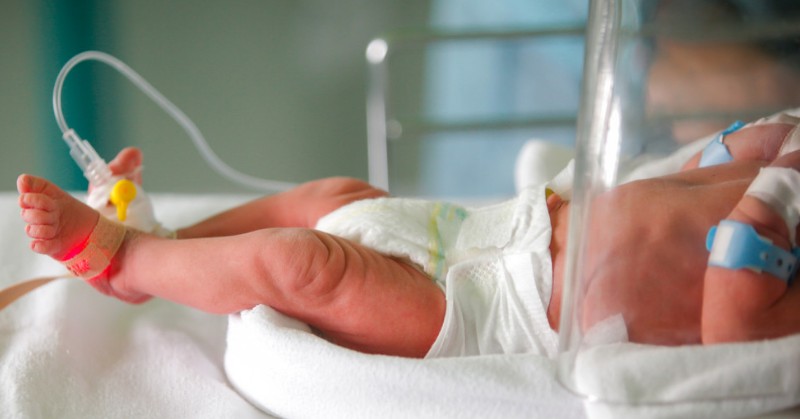
A technique using near-infrared light to detect blood oxygen levels in the brain and abdomen may have potential for monitoring the health of preterm infants needing or given a blood transfusion, suggests a small study funded by the National Institutes of Health.
Infants having brain oxygen saturation levels of less than 50% before transfusion were more likely to die or develop a neurodevelopmental impairment, compared to infants with higher brain oxygen levels. Moreover, after transfusions, the technique detected increases in brain oxygen levels, while the traditional method of monitoring blood oxygen levels with a clip-on finger sensor failed to detect any improvement in blood oxygen levels.
The study was conducted by researchers funded by NIH’s Eunice Kennedy Shriver National Institute of Child Health and Human Development. It appears in JAMA Network Open.
Background
Very early preterm infants—those born before 28 weeks of pregnancy—are at high risk of anemia, or low red blood cell count. Anemia in these infants may result in low blood pressure, rapid heart rate, higher risk of neurodevelopmental delays, or death. Causes of anemia in this group include blood loss at birth, frequent blood sampling for medical testing, and failure of the bone marrow to produce enough red blood cells.
Anemia in very early preterm infants usually is treated with a transfusion of red blood cells. The volume of red blood cells an infant needs is based on a formula that considers an infant’s weight and age. Studies differ on the precise volume of red cells needed for transfusion.
For example, the Transfusion of Prematures (TOP) trial compared the current red blood cell transfusion standards for very early preterm infants to a standard with a slightly higher red cell volume. It found no difference in survival without neurodevelopmental impairment in two groups of infants receiving either of the treatments.
For the current study, researchers evaluated data from a subset of 101 of the 1,824 infants in the TOP trial. Infants were monitored with near-infrared spectroscopy for the first week of life or for 48 hours after completion of transfusions, whichever came first. The technique passes infrared light into the tissues to monitor blood flow and oxygen saturation levels. Researchers used the technique to monitor oxygen saturation levels in the brain and the mesentery—the membrane that connects the small intestine to the abdomen. The researchers also used a pulse-oximeter—a sensor that is usually placed on a preterm infant’s palm or heel to monitor oxygen saturation in the peripheral blood.
Results
After transfusion, near-infrared spectroscopy showed that oxygen saturation levels in the brains of infants receiving the lower volume transfusion increased to an average of 4.8%, compared to 2.7% in the higher volume group. Oxygen saturation also rose in the mesentery blood of the two groups. Although these measures did not differ significantly between the groups, they provided more insight into oxygen saturation levels after transfusion, compared to the traditional monitoring technique of using the pulse-oximeter to measure peripheral oxygen saturation levels.
Significance
The authors concluded that using near-infrared spectroscopy to measure oxygen saturation in the brain and mesentery of anemic preterm infants could provide a way to observe their health after a transfusion.
Next Steps
The authors called for larger studies of near-infrared spectroscopy in anemic preterm infants after transfusion to investigate whether the technique could potentially improve survival without neurodevelopmental impairment.
Reference
Chock, VY et al. Tissue oxygenation changes after transfusion and outcomes in preterm infants: A secondary near-infrared spectroscopy study of the Transfusion of Prematures randomized clinical trial (TOP NIRS). JAMA Network Open. 2023.

 BACK TO TOP
BACK TO TOP